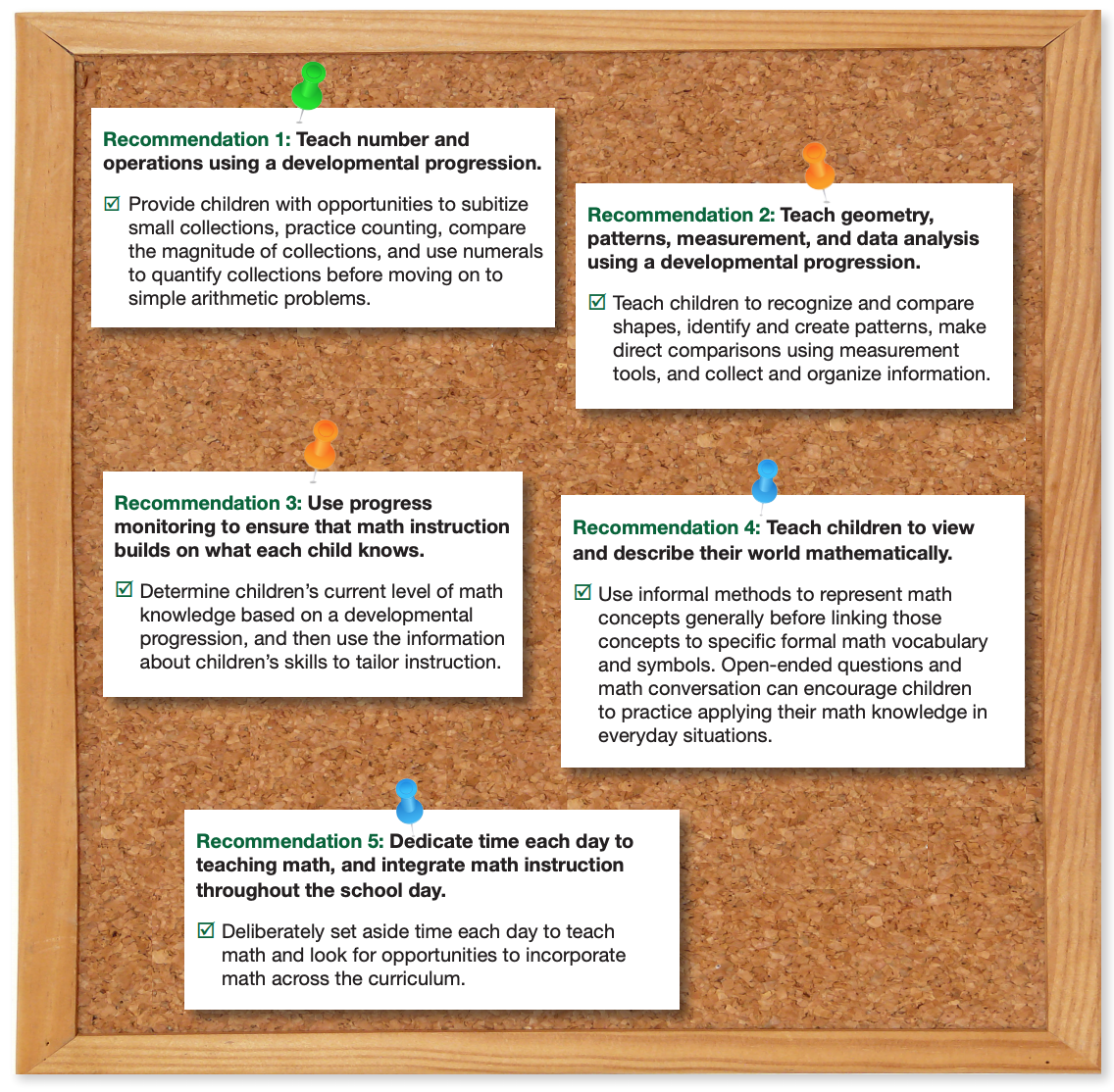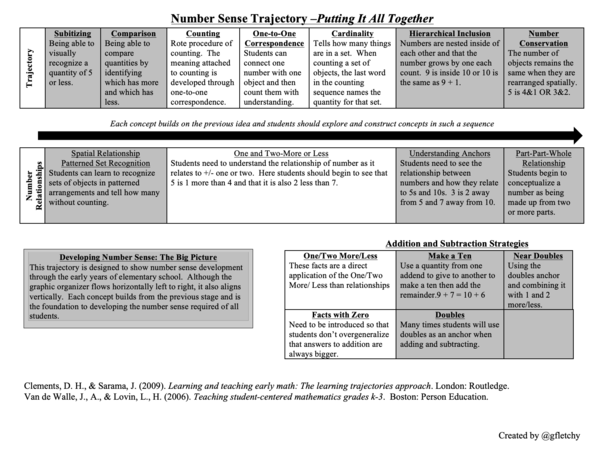November 2019
In this issue:
Children are interested in math well before they start school. They notice basic shapes, construct and extend simple patterns, and learn to count. The Teaching Math to Young Children REL-SW practice guide aims to help teachers capitalize on that interest to make children’s preschool and school experiences more engaging and beneficial.
The Teaching Math to Young Children practice guide is organized around five main recommendations; each guide has a set of clear, action-oriented steps teachers can use in their classrooms. The first two recommendations identify early math content areas that should be included in the preschool, prekindergarten, and kindergarten curricula. The last three recommendations focus on strategies and teaching techniques that incorporate math content into the classroom.

The National Council of Teachers of Mathematics (NCTM) and the National Association for the Education of Young Children (NAEYC) joint position statement affirms that high-quality, challenging, and accessible mathematics education for 3- to 6-year-old children is a vital foundation for future mathematics learning. In every early childhood setting, children should experience effective, research-based curriculum and teaching practices. Such high-quality classroom practice requires policies, organizational supports, and adequate resources that enable teachers to do this challenging and important work.
NCTM states, "Young learners’ future understanding of mathematics requires an early foundation based on a high-quality, challenging, and accessible mathematics education." Check out the National Council of Teachers of Mathematics (NCTM) position.
Marian Pasquale describes productive struggle this way, "When students labor and struggle but continue to try to make sense of a problem, they are engaging in productive struggle." To read more about productive struggle, you can access the article at this link.
Mathematics instruction in early childhood classrooms should be full of hands on activities and supported productive struggle. Student struggle must be supported so that it is a positive endeavor and not one full of difficulties and frustration (Warshauer, 2014a). The types of questions teachers ask and the types of support that teachers offer are critical. “The kind of guidance and structure that teachers provide may either facilitate or undermine the productive efforts of students’ struggles” (as cited in Warshauer, 2014a).
Warshauer (2015) describes the following four strategies to support students’ productive struggle:
Strategy 1 – Teachers ask questions that help students focus on their thinking and identify the source of their struggle, then encourage students to look at other ways to approach the problem.
Strategy 2 – Teachers encourage students to reflect on their work and support student struggle in their effort and not just in getting the correct answers.
Strategy 3 – Teachers give time and help students manage their struggles through adversity and failure by not stepping in too soon or helping too much and thus take the intellectual work away from the students.
Strategy 4 – Teachers acknowledge that struggle is an important part of learning and doing mathematics.
In an article for NAEYC, Allison Master says, "Math knowledge is useful for all of us—from children to adults—in all aspects of our lives. When parents and teachers get excited about math, then children get excited about math. When we emphasize learning, and embrace mistakes, then children get excited about learning." Read her 10 things to know about math here.

My dad gave me one dollar bill
'Cause I'm his smartest son,
And I swapped it for two shiny quarters
'Cause two is more than one!
— Excerpt from "Smart," by Shel Silverstein
Language and reading play an important part in mathematics instruction, particularly for English Learners (ELs). Reading Rockets offers some strategies for making language a part of math instruction, and for ensuring that ELs have the tools and language they need to master mathematical concepts, procedures, and skills to be successful in this helpful article.
|
In the Scholastic article, "Math Play: How Young Children Approach Math," the authors state the following. "Children become intensely engaged in play. Pursuing their own purposes, they tend to tackle problems that are challenging enough to be engrossing yet not totally beyond their capacities. Sticking with a problem — puzzling over it and approaching it in various ways — can lead to powerful learning, in addition, when several children grapple with the same problem, they often come up with different approaches, discuss various strategies, and learn from one another. These aspects of play can promote thinking and learning in mathematics as well as in other areas.
Young children explore patterns and shapes, compare sizes, and count things. But how often do they do that? And what does it mean for children's development? When children were studied during free play, six categories of mathematics content emerged."
 Over the past months I have researched mathematicians to help me understand the importance of a mathematics trajectory or continuum in early math instruction. I found a great resource in Graham Fletcher. Mr. Fletcher has served in education as a classroom teacher, math instructional lead, and currently as a math specialist. GFletchy is the name of Mr. Fletcher's homepage.
The number sense trajectory pictured above was created 5 years ago by Graham Fletcher. Here is a link to a Number Sense Trajectory Cut-N-Sort. This would be a fast activity to kick off a series of PLC/Collaboration time meetings around early math instruction. The teachers are asked to first match header and descriptors. Then they place the header and descriptors in the order that students learn number sense.
Just as students need phonemic awareness before phonics, they need concrete objects (manipulatives) before moving to representational and abstract math concepts. This is the Concrete-Representational-Abstract Sequence of Instruction. Mr. Fletcher has a nice video, The Progression of Early Number & Counting. The video explains the number progression with easy to understand visuals.
Here are the three basic steps to move through the Concrete-Representational-Abstract Sequence.
- When a student is introduced to a new concept or something unfamiliar, allow the use of tools. (Concrete - sets)
- When the student can perform the task with concrete objects, they move on to representing the concept with drawings or pictures. (Representational - ten frames, drawings of objects, etc.)
- When the student can master the task with a drawing or a picture they move to using only numbers and symbols. (Abstract - numerals)
* Note it is important to keep all three of these ways visible to promote strong connections and deep conceptual understanding.
“All of us are smarter than one of us.” – Graham Fletcher
|